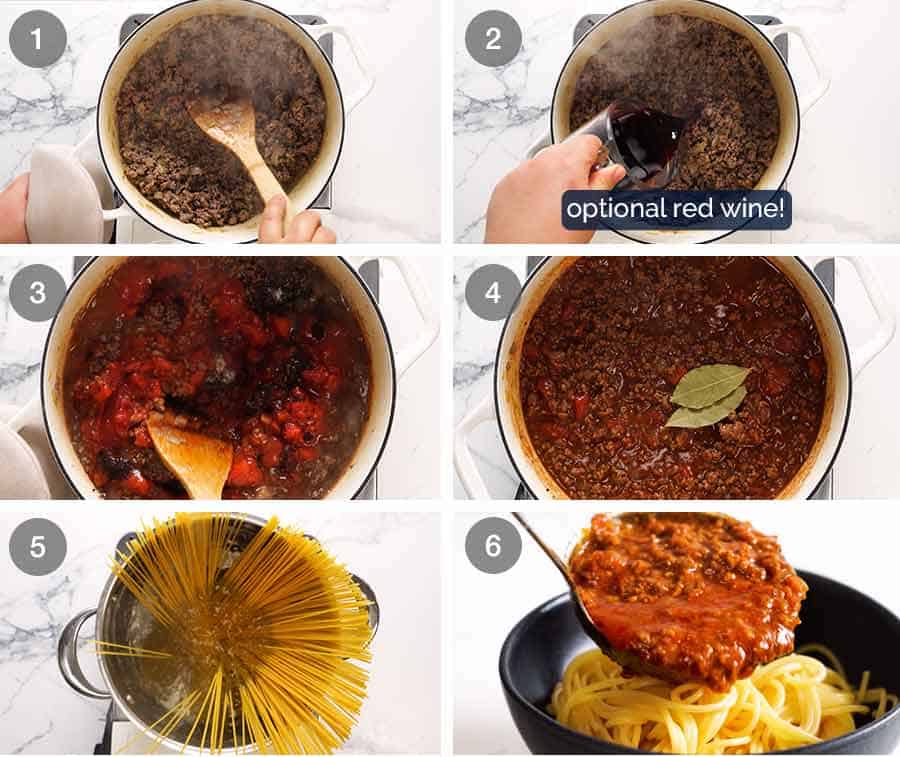Spaghetti sauce and bolognese are two of the most popular Italian sauces that are enjoyed all over the world. Spaghetti sauce is a tomato-based sauce while bolognese is a meat-based sauce. Both sauces have a rich history and unique flavors, making them popular staples in many households around the world. In this article, well take a closer look at spaghetti sauce vs. bolognese sauce to help you understand the differences between these two classic Italian sauces, so you can choose the best one for your next meal.
Spaghetti is the noodle, not the noodle and sauce. Bolognese sauce is a meat-based tomato sauce used on cooked pasta. There is a lot of variety depending on who is making it. For some people this is what they mean when they say “spaghetti sauce).

Exploring the Flavors and Texture of Spaghetti Sauce vs. Bolognese
Spaghetti sauce is known for its bright, tangy tomato flavor, with hints of garlic and herbs. Its typically a bit thinner in consistency than bolognese, which makes it ideal for coating long noodles like spaghetti. Bolognese sauce is a rich, savory sauce with a deep flavor that comes from the meat and vegetables. The sauce has a thick, hearty texture that pairs well with shorter kinds of pasta like rigatoni or penne. The flavor difference between spaghetti sauce and bolognese is significant, with spaghetti sauce being bright and tangy, and bolognese being rich and savory. Texture-wise, spaghetti sauce is thinner and more liquid, while bolognese is thicker and heartier.
Ingredients and Preparation of Spaghetti Sauce vs. Bolognese
Spaghetti sauce is typically made with canned or fresh tomatoes, garlic, onions, olive oil, salt, and herbs such as oregano, and basil. Some recipes also call for red pepper flakes, sugar, or grated cheese. In most recipes, crushed tomatoes and herbs are added to spaghetti sauce after sautéing onions and garlic in olive oil. For the flavors to blend, the sauce is simmered for about 30 minutes.
Bolognese sauce is made with ground beef, pork, or a combination of both, onions, carrots, celery, canned tomatoes, tomato paste, garlic, red wine, and milk or cream. Some recipes also call for pancetta, mushrooms, or parmesan cheese. When preparing bolognese, it is a bit more complex. First, the meat and vegetables are sautéed in olive oil, then tomato paste, wine, and milk are added to the pot. Then the sauce is left to simmer for about 3 hours allowing the flavors to develop.
A Different Spaghetti Bolognese
FAQ
Why is it called spaghetti bolognese?
What is the difference between spaghetti al ragù and Bolognese?
What is the difference between a meat sauce and Bolognese?
Is spaghetti bolognese and spaghetti and meatballs the same?
Is spaghetti sauce better than Bolognese?
Spaghetti sauce is notably lower in calories and fat than Bolognese, making it a good choice for those on a diet. It is also, however, a lot lower in protein. Bolognese is a meat-based sauce, while spaghetti sauce is traditionally vegetarian. Spaghetti sauce can also be made with meat, but it isn’t a requirement by any means.
What is the difference between linguini and spaghetti?
Linguine is a type of pasta similar to fettuccine but elliptical in section rather than flat. It is about 4mm in width, which is wider than spaghetti but not as wide as fettuccine. Linguine are long strands like spaghetti, but flattened on two sides. Linguine is extremely versatile, and can be used interchangeably with spaghetti. Linguine actually holds on to sauces better than spaghetti due to its flat curvature. The shape of linguine has more surface than spaghetti and therefore is good with thinner sauces while spaghetti is better with thicker sauces.
What does Bolognese sauce taste like?
Bolognese sauce is a rich, savory sauce with a deep flavor that comes from the meat and vegetables. The sauce has a thick, hearty texture that pairs well with shorter kinds of pasta like rigatoni or penne.
What is the difference between Bolognese sauce & beef sauce?
The key difference here is that bolognese sauce contains meat of some sort – beef, veal or pork are the most popular options. It just so happens that beef is the most popular choice in Italy (and your favourite Italian restaurant Sydney ).
